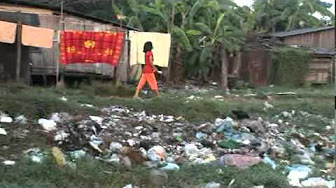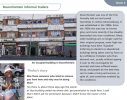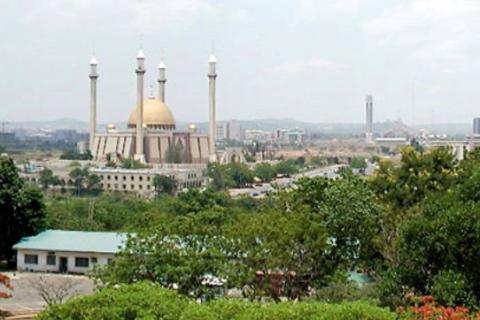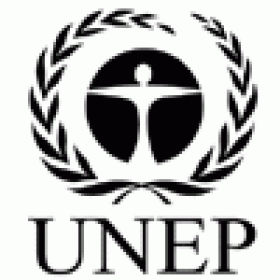
Proportion of urban population living in slums, informal settlements or inadequate housing
Last updated on 1 February 2022
This indicator is currently classified as Tier I. The United Nations Human Settlements Programme (UN-Habitat) is the Custodian agency for this indicator.
Unit of measure: The indicator is unitless, expressing a ratio between the number of people living in households who do not meet one or more of the basic housing conditions and the total population (%), Ratio between the number of households with net monthly expenditure on housing exceeding 30% of the total monthly income and the total population (%), Ratio between the number of households with approved municipal permits and the total population (%)
Why is this indicator important?
Urbanization is one of the most significant global trends of the 21st century. Rapid urbanization without proper planning and governance mechanisms, can lead to tenure insecurity, spatial inequalities and a lack of basic service provision. Expanding slums and precarious informal settlements may increase poverty, pollution, health, and environmental risks. At the same time, displacement for urban development can lead to food insecurity, loss of community structures, and the marginalization of certain segments of the population.
It is thus essential to collect data on the proportion of the population living in slums, informal settlements or those living in inadequate housing so that appropriate policies for addressing housing issues can be developed ensuring no one is left behind.
How is the indicator measured and monitored?
According to the metadata document, people living in informal settlements or slums, do not meet one or more of the five following housing conditions: (1) access to improved water; (2) access to improved sanitation facilities; (3) sufficient-living area (not overcrowded); (4) durable housing; (5) and security of tenure. In addition, the indicator considers whether households have an approved municipal permit as well as their affordability to measure inadequate housing. Most data is derived from censuses and household surveys. In addition, UN-Habitat reports annually on related data in the MDG’s reports. In 2021, the Global Housing Indicators Working Groups suggested to coordinate the worldwide data collection on this indicator.
As of now, indicator measurement covers 320 cities as part of the UN-Habitat City Prosperity Initiative. The data is disaggregated by location, income-group, sex/ethnicity/religion/migration status (head of household), age, and disability status. Planning has already begun for regional and global disaggregation. The major limitations lie with the lack of capacities at national and city levels to assess and monitor all indicator components. Moreover, the indicator does not consider homelessness.
By Anne Hennings, peer-reviewed by Dennis Mwaniki, Spatial Data Expert at UN-Habitat’s Data and Analytics Unit.
Official indicator data
The criteria defining slums, informal settlements and inadequate housing include access to water, access to sanitation, sufficient living area, overcrowding, structural quality, durability and location, security of tenure, affordability, accessibility, and cultural adequacy. * Select "year" below to see the most recent data for more countries.
Other related indicators on the Land Portal
In addition to the official indicator data, the following indicators provide information concerning urban land administration, access to feasible and affordable formalization, and efforts to improve informal settlements.
| Indicator | Min-Max Number of years |
Countries / Obs | Min / Max Value |
|---|---|---|---|
| Formalization of urban residential housing is feasible and affordable | |||
| Individual land in urban areas is (i) recorded and (ii) mapped | |||
| Process to improve informal settlements exists | |||
| Urban Population |
Urban land markets in Southern African cities
This case study draws on a regional study of urban land markets in southern Africa. The research was undertaken by Resetselemang Leduka of the National University of Lesotho, and commissioned by Urban LandMark and UN-HABITAT.
A school in a Cambodian Slum
Youth Bamboo Shoots Slum School (YBSSS) is a project of VFI Cambodia.
The goal: to provide a safe and creative place for over 65 children to attend school in the dilapidated slum area near Battambang City's central railway station.
Access to land in poorer parts of towns and cities
This case study draws on research into some of the processes through which people access, hold, and trade land in poorer areas of towns and cities. The research was commissioned by Urban LandMark and undertaken by the Isandla Institute, Stephen Berrisford Consulting and Progressus Research and Development.
Urban land development in practice
This case study draws on research that sought to understand the process of urban land development in practice, from the perspectives of developers and municipalities. The research was undertaken by the Department of Town and Regional Planning, University of Pretoria, commissioned by Urban LandMark. The resource includes some learning and reflection activities based on the case study.
Co-existing urban land use management practices
This case study draws on research that investigated how urban land is claimed, used or divided and the various land use management (LUM) practices that exist around these various and sometimes competing land uses. This case study is based on a research study undertaken by Colin Marx and Margot Rubin with Progressus Research and Development, commissioned by Urban LandMark.
Paginering
Myanmar police force hundreds from factory area slums as land-grabbing grows rampant
By: Agence France-Presse
Date: January 26th 2016
Source: South China Morning Post
Hundreds of Myanmar families were left destitute on Tuesday after government workers used mechanical diggers to flatten swathes of Yangon slum housing as the bitter competition for land intensifies in the fast-industrialising city.
Habitat III Regional Meeting for Africa
Habitat III is the United Nations Conference on Housing and Sustainable Urban Development to take place in Quito, Ecuador, from 17 – 20 October 2016.
Nigerian architect looks to turn Africa’s slums into thriving floating cities
By: Maxwell Awumah
Nigerian architect Kunlè Adeyemi is re-conceiving African’s water slums as floating cities or islands.
Paginering
- Vorige pagina ‹ previous
- Pagina 8
![]()
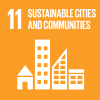
By 2030, ensure access for all to adequate, safe and affordable housing and basic services and upgrade slums
Indicator details
The Indicator is conceptually clear, has an internationally established and available methodology and standards, and that data is regularly produced by countries for at least 50 per cent of countries and of the population in every region where the indicator is relevant.
Key dates:


